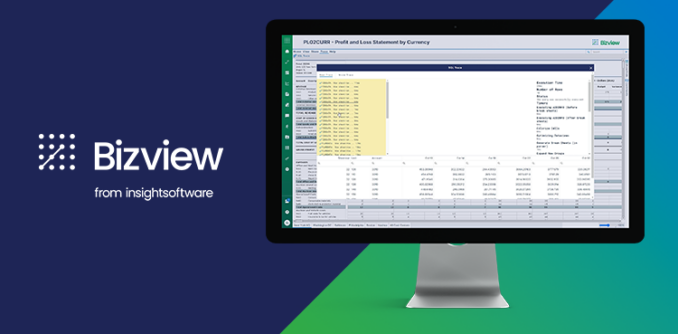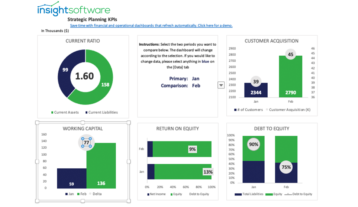Mastering the Art of FP&A Storytelling

Chip Heath, co-author of Made to Stick: Why Some Ideas Survive and Others Die, describes an experiment he performed while teaching at Stanford. He divided his students into two groups and provided them with statistics about crime rates in the United States. He asked individuals in the two groups to make a brief one-minute presentation. He instructed members of the first group to argue that non-violent crime is a serious problem, and members of the other group to take the opposite position.
Following the presentations, Heath distracted the class for a few minutes with an unrelated task, and then returned their attention to the series of presentations, asking them to write down everything they could remember. The results were interesting; while only 10 percent of students told a story during their presentations, 63 percent of the class remembered those stories when asked to recall the details. In contrast, only 5 percent of students could remember even a single statistic.
While facts and figures aim to present information about the world, they are usually difficult to internalize. For most people, the process of interpreting and eliciting meaning from numerical information is a challenge. It takes work to digest numbers and draw conclusions from them. Stories, in contrast, can give an audience immediate access to that same reality, in a far more intuitive way. Stories help people make sense of the world quickly and draw connections to the things they care most about.
In a world overflowing with information, the human mind seeks out ways to discern the most important information quickly. In BMW’s ad campaigns, the company does not talk about the technical superiority of its engines or suspension systems. Instead, they tell prospective buyers that BMW is “the ultimate driving machine.” Dedicated gearheads can dig for more information, of course, but for the rest of us, BMW’s slogan serves as a kind of shorthand expression of what makes the brand unique. It tells us very succinctly what BMW stands for.
Although we wouldn’t suggest that you try to turn important financial planning discussions into advertising campaigns, there is nevertheless an important lesson to learn here. There is tremendous value in translating facts and figures into terms that other people in your organization can understand quickly and intuitively. For a growing number of accounting professionals, storytelling is emerging as a powerful communication tool within the financial planning and analysis (FP&A) process.
The Strategic Role of Finance
CFOs (and the teams that work for them) are increasingly expanding their roles as strategic pillars of the organizations they serve, providing visibility to company performance and an informed view to the road ahead as business conditions rapidly change. In most organizations today, the accounting department does not simply manage and report information, rather it provides a vital perspective that helps keep stakeholders throughout the organization firmly rooted in reality.
To do that, leaders in finance and accounting must increase their capacity to communicate effectively. They must help stakeholders throughout their organizations bridge the gap between the hard facts that show up in the company’s financial statements and the implications for business strategy and day-to-day tactical decisions. Storytelling is a key element in achieving that objective.
To better understand how storytelling can add value, it can be helpful to describe information in terms of its accessibility to a general audience, breaking it down into several different categories:
- Data are the lowest level of the information pyramid; they are the foundation upon which everything else is built. This includes information that has been summarized and presented as a tabular report, as well as unfiltered data. Data give you the best available approximation of reality because they provide measurable information about the world around you. Unfortunately, they are also the least accessible to many people, in the sense that they require considerable effort to review, analyze, and understand the meaning behind the data. This process often calls for a highly informed or educated perspective. Your colleagues who may not be well-versed in financial statements, for example, or who do not fully understand how costs are allocated across departments with the organization might have difficulty drawing meaningful conclusions simply by looking at the numbers. Seasoned finance professionals handle that task best.
- Patterns and trends tend to eventually emerge from a body of data after an analyst spends some time to digest and understand it. Very often, this can lead to specific conclusions and provide critical guidance for important business decisions. Data visualization tools such as executive dashboards make it possible for a broader audience to grasp the meaning behind the data, identifying patterns and trends with relative ease. Even at this stage, though, it takes additional effort to fully understand the implications of the presented data, and to draw conclusions that will lead to better business decisions.
- Meaningful insights result when you understand patterns and trends in the larger context of the business and the environment in which it operates. While finance and accounting must always have mastery of the data at a more detailed level, many people throughout the organization simply need a broad-brush understanding of what it all means. They don’t need to understand how a BMW’s internal combustion engine works; they just need to know that it’s the ultimate driving machine. Storytelling provides a powerful way of communicating meaningful insights so that people will remember them, internalize them, and share them with others throughout the organization.
The FP&A process is about understanding an organization’s current reality alongside its strategic objectives and laying out an achievable roadmap for the future. As the finance department draws conclusions and seeks to communicate its insights to the rest of the organization, storytelling provides a powerful tool for creating a common vision around that roadmap.
Know Your Audience
Good storytelling begins with understanding the audience with whom you are speaking. What are their needs? What do they care about? What questions do they want answers to?
A good place to begin is with your company’s stated mission and values. If the corporate mission statement articulates a commitment to outstanding customer service, then you may want to tell your story in a way that illustrates how your proposal can support that objective. If the company places a high value on contribution to the surrounding community, consider how you might make your case in a way that emphasizes the company’s commitment.
A proposal to increase tuition reimbursement programs for employees, for example, can build employee loyalty and reduce rates of turnover. While that may have some very real economic benefits supported by financial analysis, there is an important human component that you should not overlook. Imagine putting a face and a name to that proposal by sharing a true story that illustrates how the program could change someone’s life for the better. What started out as a conversation about cost and benefits is now anchored in the listeners’ memory. In this case, a story would be especially effective if one of the company’s stated values is “We strive to be a great place to work.”
There are several other important factors to consider when it comes to knowing your audience. Even within a single organization, the knowledge, experience, and perspectives of different audiences can vary widely. Be careful to avoid jargon, acronyms, and abbreviations that may not be familiar to employees across all departments.
Legendary investor Warren Buffett takes great care in preparing the annual report for his company, Berkshire Hathaway. His guiding principle? He writes the report so that his sisters can understand it. “They’re smart,” Buffett says, but his two sisters are “not active in business, so they’re not reading about it every day. I pretend that they’ve been away for a year and I’m reporting to them on their investment.”
It’s important to avoid talking down to people as well, though. Attempts to simplify information can backfire if carried too far. If you’re not sure whether your audience has the necessary background knowledge to understand what you’re saying, just ask. Most people will appreciate the fact that you are being sensitive to their needs.
Cultural nuances also matter. In the United States, we often hear the expression “hitting it out of the park.” That’s a reference to baseball, and it might not translate well to most audiences around the world. Stories, too, can be interpreted very differently depending on who hears them. An anecdote that amuses one audience might be offensive to another. When in doubt, ask for advice from someone who knows the audience well.
Finally, if you are addressing a group of senior executives, you’ll want to keep your stories short and to the point. The higher up you go in the organization, the more important it is to be succinct.
Keys to Effective Storytelling in the FP&A Process
To effectively use storytelling in the FP&A process, it’s important to follow some best practices for gathering information and developing your key messages:
- Get the complete picture and eliminate data silos. Most organizations are running multiple business applications, each with its own dedicated reporting mechanism. While that can be a convenient way to meet basic requirements, it usually falls apart whenever you require a more refined analysis. Sales forecasts, for example, typically call for an analysis that incorporates historical sales order information from ERP alongside sales pipeline data from the CRM system. Doing that kind of analysis can be cumbersome and error-prone because you must copy and paste data from multiple source systems into a spreadsheet, in which you must further manipulate them before you perform any analysis. In addition, many organizations struggle with having “multiple versions of the truth.” That leads to debates about which number is correct, wasting time and frustrating top-level executives. Purpose-built reporting tools make life vastly easier by providing a single lens through which to see all of your organization’s information.
- Use the right tools. Providing your team with the right reporting and data visualization tools gives them a strong head start in the process of turning data into meaningful insights. A recent article by insightsoftware discussed the powerful benefits of data visualization and provided several examples in which data visualization (or the lack of it) had a substantial impact on historical events. When you put data visualization and reporting tools into your employees’ hands, you are freeing them up to apply their skills and experience to greater effect.
- Show and tell. Visuals often accompany great stories. While infographics are a relatively new phenomenon, the concept of using visuals to convey a point is an old one. A picture is worth a thousand words. Charts and graphs can illustrate trends and projections in a way that anyone can quickly and easily digest. Images need not always convey quantitative information, though. Organizations like CURE International show their donors pictures that vividly bring their mission to life by sharing individual success stories and giving them a human face.
- Refine your message. Finding the right story might require a bit of trial and error. Talk to your colleagues one-on-one and try out different approaches. Figure out what resonates with people in your target audience. Don’t be afraid to make storytelling part of your overall communication strategy for the FP&A process. Start small and figure out what works.
Ultimately, storytelling is a great tool for bridging the gap between the very detailed information that is difficult and time-consuming for most people to understand and the meaningful insights that drive good business decisions. Along the way, it’s critically important to have great tools in place to support you in that process.
At insightsoftware, we provide simple yet powerful tools for reporting and visualizing business information to help you tell the story behind your numbers. We enable faster, easier, and more affordable business insights than ever before. insightsoftware is a leading provider of financial reporting and enterprise performance management software, with integration to over 140 different ERP systems and other enterprise applications. To learn more about how insightsoftware can help you with your FP&A processes, download our free guide, Eight Key Factors to Consider when Evaluating Continuous and Extended Financial Planning Software.










